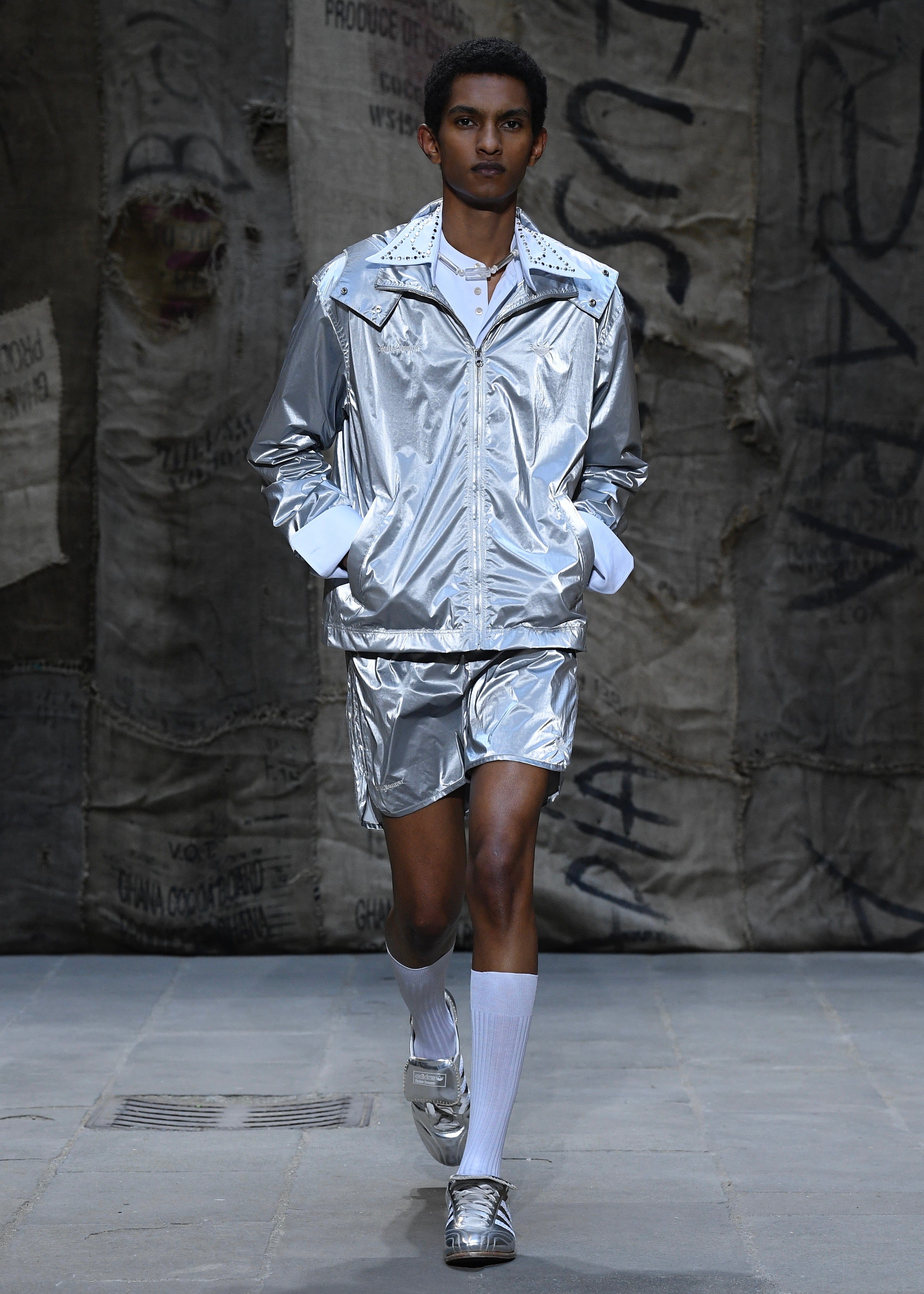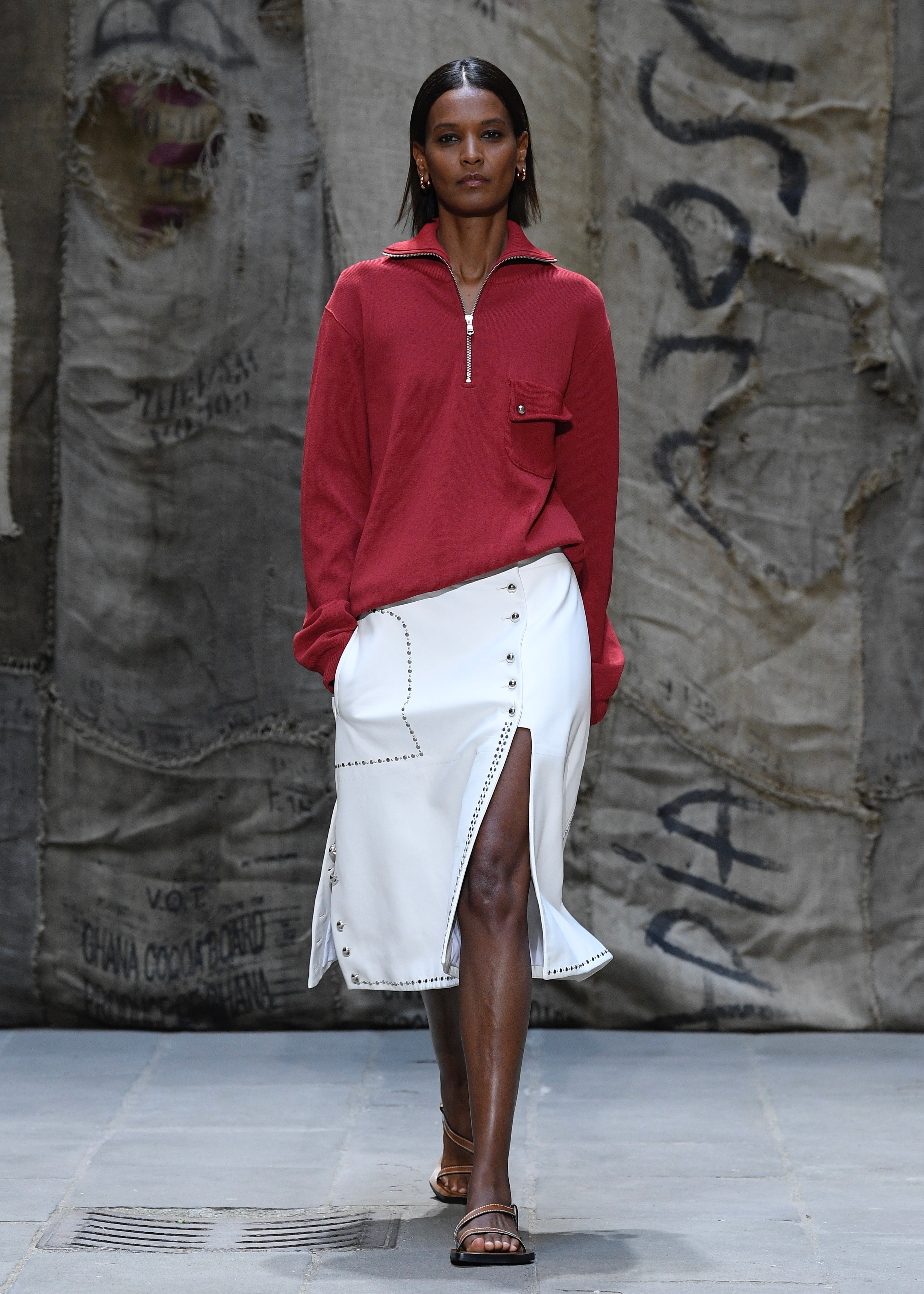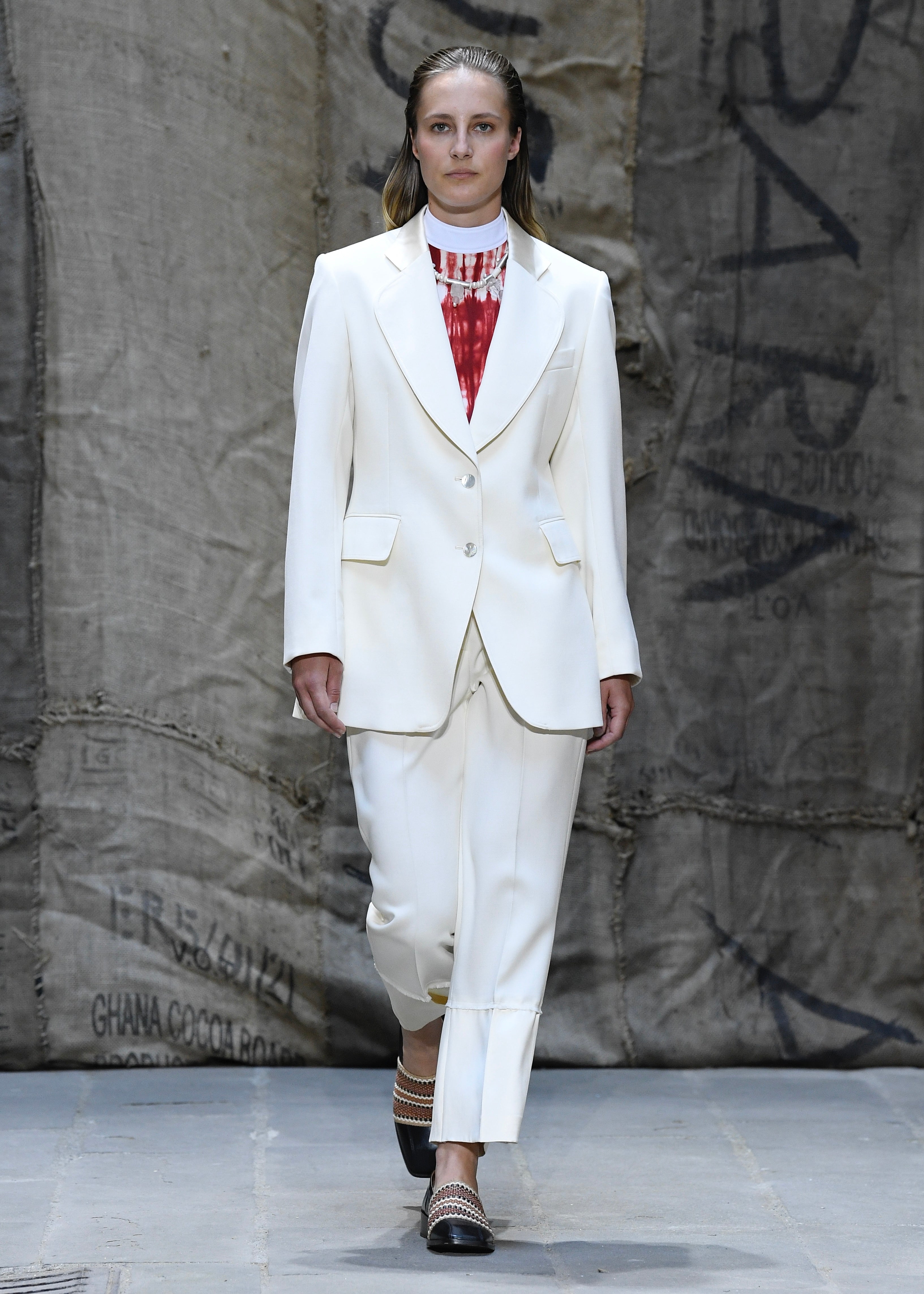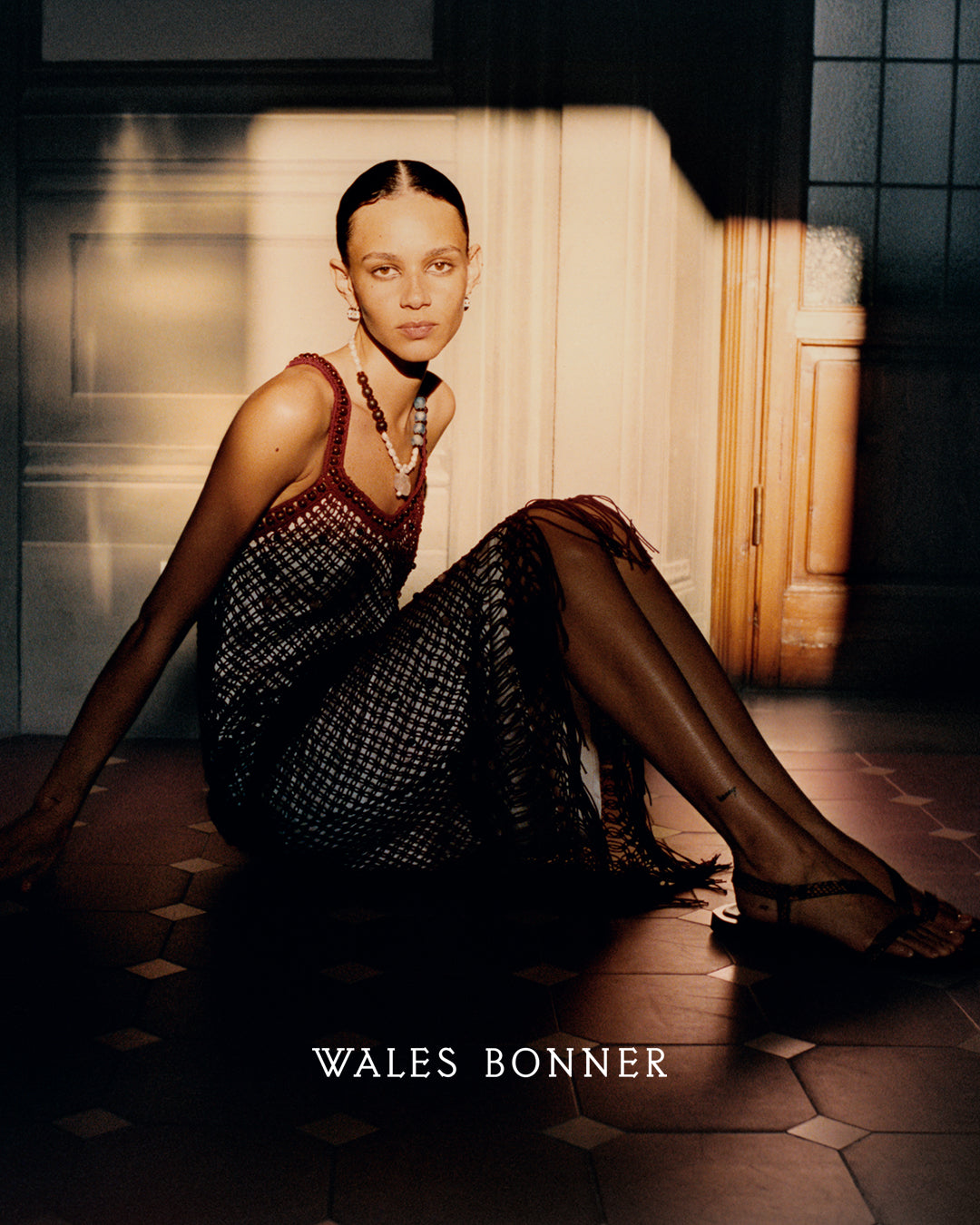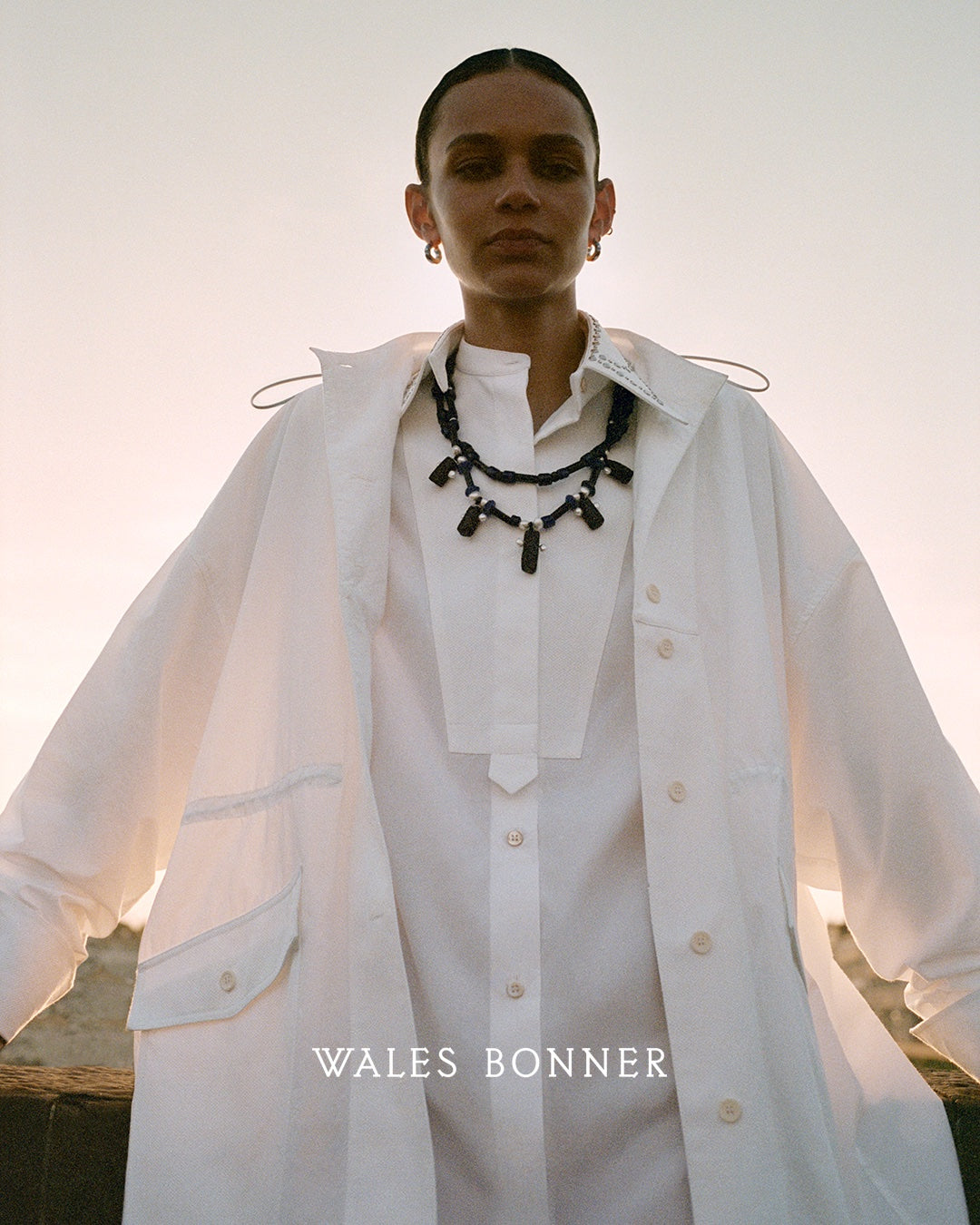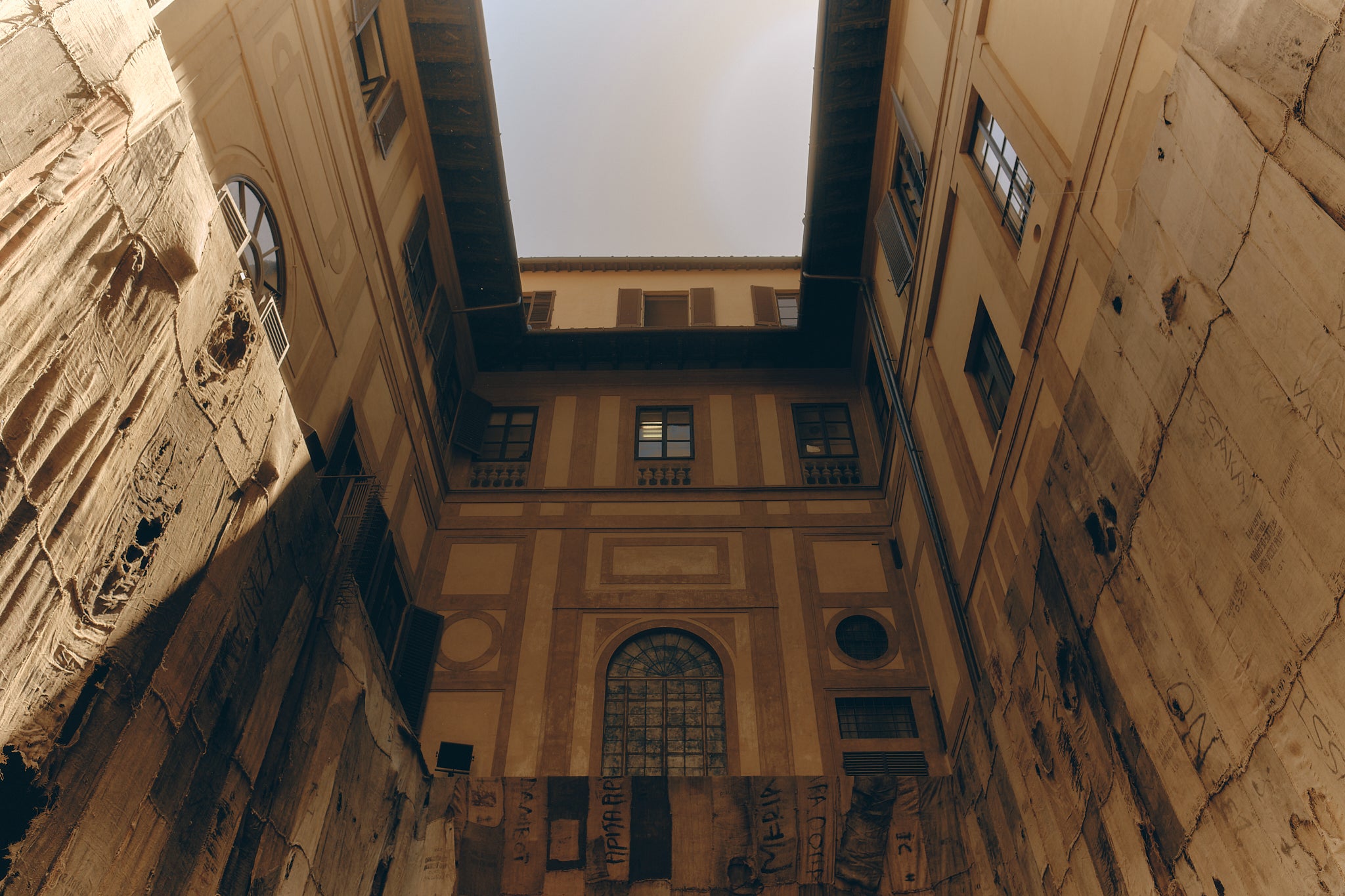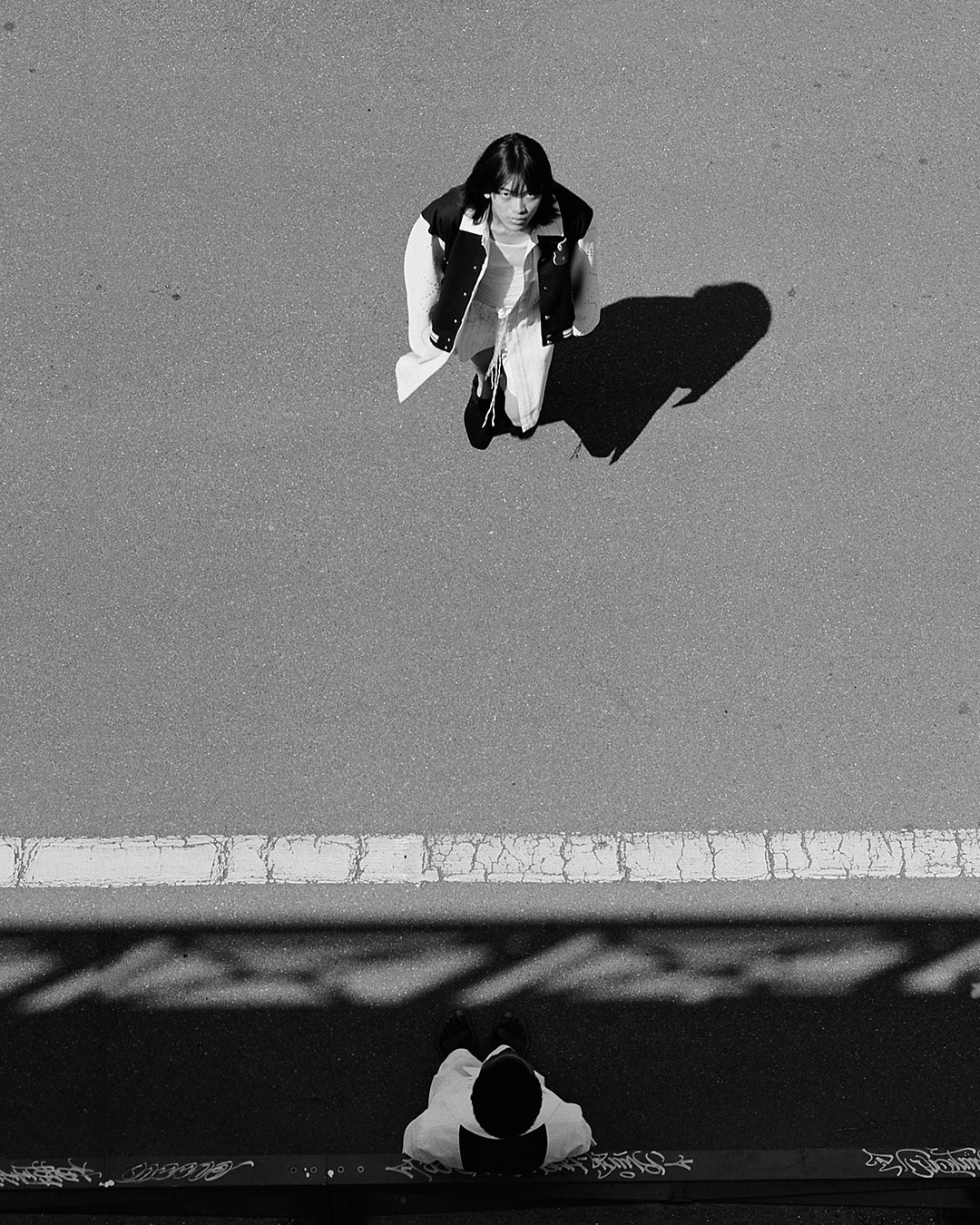Horizon Blues
Spring Summer 2023
Melodies ring forward like the flight of a bird—Sankofa arrives, adorned in the radiance of the past, pointing towards new paths, alternative processions for an eclectic cast.
The multidisciplinary spirit of Wales Bonner manifests in a collective expression of Afro- Atlantic presence amongst the European splendour of Palazzo Medici Riccardi. In a monumental installation by Ghanaian artist Ibrahim Mahama, an intervention covers the architectural space with jute sacks hand stitched together by local collaborators and reveals instances of exchange, while leaving behind material traces and intertwined histories for future generations.
Wales Bonner’s Spring Summer 23 collection offers a celebration of hand craftsmanship, exhibited through beaded macrame dresses and artisanal jewellery in a hybrid of baroque Pearl, rock Crystal and recycled glass beads made in Ghana. Hand dyed jerseys and woven cottons made in Burkina Faso alongside opera coats crafted from silk jacquard designs developed specially by the House of Charvet in Paris, unite hand making traditions across continents.
The memory of a black Medici is felt in deconstructed elements of a ceremonial wardrobe; formal shirting undone in semi sheer silks, cinematic collars flying away in the Florentine sun, tailored silhouettes cut with a minimalistic sportiness. A red Clay satin uniform. Horizon Blue—a suede jacket shines in silver studs making way for a polyrhythmic saunter in zebra cowhide mules and snakeskin sandals and the introduction of Wales Bonner footwear collection.
Cashmere tuxedos and a camel hair coat made in partnership with Savile Row tailors Anderson and Sheppard, walk alongside T-shirts made in collaboration with American master painter Kerry James Marshall, taking their rightful place in a palace built for patrons of the old masters. Reverberations continue in the latest iteration of adidas Originals by Wales Bonner; marathon-wear in futuristic silver and handmade patent leather football boots that retrieve the grace of past silhouettes on new terrain—new material for spirited endeavours. These collaborations fittingly represent the codes of Wales Bonner: an elegant and evocative harmony of European heritage and Afro-Atlantic spirit.
The musical direction for the show, developed by James William Blades includes a sound installation recalling a market space within the Palazzo garden, chamber music from Malian kora player Ballaké Sissoko, and further contributions from American musician Chino Amobi and South African sound artist Philip Miller.
Newly commissioned music from Pa Salieu articulates a sense of arrival, or irreverent presence in a unique mix of ancestral wisdom and complex bravado. Even the griot who tells centuries-old tales, tells them only for their time. Like the myriad blues, Pa’s song is a syncopated rhyme—weighed down by the present, but always making strides. Essences of past locales, never left behind. A reprise, woven with glimmering threads of futurity.
Historical Context - The Palazzo Medici was commissioned in 1444 by Cosimo de’ Medici, patriarch of the storied banking dynasty. Construction of the Palazzo began at a time when Cosimo, de facto ruler of Florence, played host to the 17th ecumenical council—a gathering of all Christendom. A Black presence was welcomed to the city among delegations from across the globe, a spectacular coalescence of cultures bringing new crafts, customs and clothing— “Armenians and Ethiopians... Ukrainians and Russians with Tartar servants... other entourages included Moorish, Berber and black African attendants... One delegation had pet monkeys, while others brought along exotically plumed singing birds... as well as some tamed cheetahs.” ¹
The walls of the Palazzo’s famed Magi Chapel further attest to the presence of Africans in Renaissance Italy—Benozzo Gozzoli’s celebrated fresco depicts a holy procession in which a Black archer features prominently in the foreground amidst portraits of the Medici family and their retinue.
The senior line of the House of Medici ended in 1537 with the death of Alessandro de’ Medici, Duke of Florence. Believed to have been born to a servant of African descent working in the Medici household, Alessandro ruled Florence as a hereditary monarch. Living in this Palazzo throughout his reign, he is regarded as the first black head of state in modern western Europe.
1. Strathern, P. (2003). The Medici: godfathers of the Renaissance. London, Jonathan Cape.
REFERENCES
Brioschi, Eva, Ibrahim Mahama, Bernard Akoi-Jackson, Selom Kudjie, and Karî'kachä Seid'ou. Ibrahim Mahama: Voli-Ni: \. Milano: Lenz Press, 2022.
Camara, Laye. The Guardian of the Word = Kouma Lafôlô Kouma. New York: Aventura, 1984.
Collins, John. African Musical Symbolism in Contemporary Perspective: Roots, Rhythms and Relativity. Berlin: Pro Business, 2004.
Diawara, Manthia. “The Song of the Griot.” Transition, no. 74 (1997): 16. https://doi.org/10.2307/2935371.
Feld, Steven. Jazz Cosmopolitanism in Accra: Five Musical Years in Ghana. Durham: Duke University Press, 2012.
Herz, Manuel, Schröder Ingrid, Hans Focketyn, Julia Jamrozik, Iwan Baan, and Alexia Webster. African Modernism: The Architecture of Independence: Ghana, Senegal, côte D'Ivoire, Kenya, Zambia. Zurich: Park Books, 2022.
Mahama, Ibrahim, Kwasi Ohene-Ayeh, and Bernard Akoi-Jackson. Exchange-Exchanger: (1957-2057). Köln: Verlag der Buchhandlung Walther König, 2017.
Osseo-Asare, Abena Dove. “Kwame Nkrumah’s Suits: Sartorial Politics in Ghana at Independence.” Fashion Theory 25, no. 5 (2021): 597–632. https://doi.org/10.1080/1362704x.2021.1878591.
Thompson, Robert Farris. Aesthetic of the Cool: Afro-Atlantic Art and Music. Pittsburgh: Periscope Publishing, 2011.
Edwards, Jeano, dir. Horizon Blues. 2022; Florence, It.






